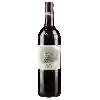
Winery Charles de MonteneyOak Aged Bordeaux
This wine generally goes well with poultry, beef or veal.
Food and wine pairings with Oak Aged Bordeaux
Pairings that work perfectly with Oak Aged Bordeaux
Original food and wine pairings with Oak Aged Bordeaux
The Oak Aged Bordeaux of Winery Charles de Monteney matches generally quite well with dishes of beef, veal or game (deer, venison) such as recipes of beef with mustard, wiener schnitzel or viennese schnitzel or rabbit with cider and prunes.
Details and technical informations about Winery Charles de Monteney's Oak Aged Bordeaux.
Discover the grape variety: Seyval blanc
A relative of the Saint Pepin, this direct-producing hybrid is the result of an interspecific cross between 5656 Seibel and Ray d'Or (4986 Seibel) obtained in 1921 by the Seyve-Villard company, formerly based in Saint Vallier (Drôme). Seyval blanc is registered in the official catalogue of wine grape varieties, list A. It can be found in the United States, Canada, Brazil, Australia, South Africa, Great Britain, the Netherlands, Germany, Romania, Switzerland, etc. It is practically non-existent in France and is in danger of disappearing.
Informations about the Winery Charles de Monteney
The Winery Charles de Monteney is one of of the world's greatest estates. It offers 11 wines for sale in the of Bordeaux to come and discover on site or to buy online.
The wine region of Bordeaux
Bordeaux, in southwestern France, is one of the most famous, prestigious and prolific wine regions in the world. The majority of Bordeaux wines (nearly 90% of the production Volume) are the Dry, medium and Full-bodied red Bordeaux blends for which it is famous. The finest (and most expensive) are the wines of the great châteaux of Haut-Médoc and the right bank appellations of Saint-Émilion and Pomerol. The former focuses (at the highest level) on Cabernet Sauvignon, the latter on Merlot.
The word of the wine: Second fermentation
In the making of champagne, fermentation of the base wine to which is added the liqueur de tirage and which takes place in the bottle. This second fermentation produces the carbon dioxide, and therefore the bubbles that make up the effervescence of the wine.














